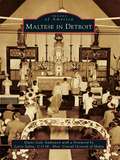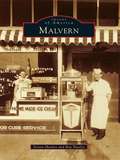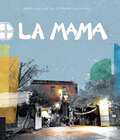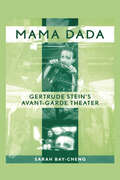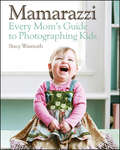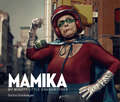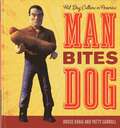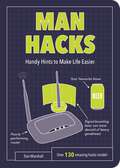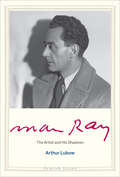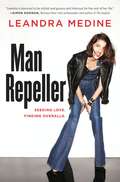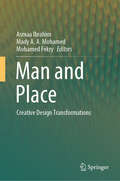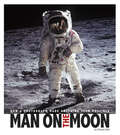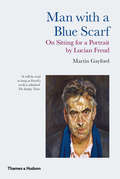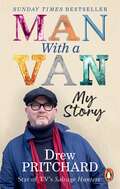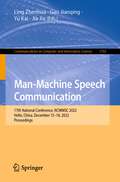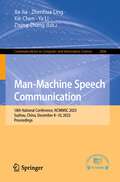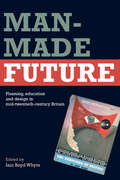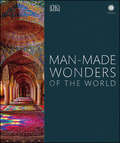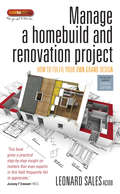- Table View
- List View
Maltese in Detroit
by Larry Zahr U.O.M. Diane Gale AndreassiMost Maltese immigrants came to the United States during the first decades of the 20th century after the discharge of skilled workers from the Royal British Dockyard in 1919 following the end of World War I. More than 1,300 Maltese came to the United States in the first quarter of 1920. Many people found work in the automobile industry, and with about 5,000 residents, Detroit had the largest Maltese population in the United States. Maltese in Detroit focuses on the many people of Maltese descent who made their homes in Detroit's Corktown area. By the mid-1920s, it is believed that more than 15,000 Maltese had settled in the United States. After World War II , the Maltese government launched a program to pay passage for Maltese willing to immigrate and remain abroad for at least two years. By the mid-1990s, an estimated more than 70,000 Maltese immigrants and descendants were living in the United States, with the largest single community in Detroit and its surrounding suburbs.
Malvern (Images of America)
by Ray Hanley Steven HanleyHot Spring County was established in 1829, and its county seat, Malvern, was laid out as a station on the Cairo and Fulton Railroad in 1873. A remarkable diversity of agricultural, timber, and mineral products spurred the county's growth over the decades, especially the abundant clay deposits that made Malvern the "Brick Capital of the World."
Mama
by Adam CassIn August 2017, Melbourne's La Mama Theatre celebrates 50 years since the premiere of its first production, Jack Hibberd's 'Three Old Friends'. La Mama commemorates the rich life story of the theatre so far, tracking the history and chronology of the work that has been made and the many careers that have been born, raised and cherished there. Complemented by hundreds of wonderful photographs, the book is woven together through a series of rowdy yarns spun by the La Mama community, capturing a sense of the magic that has been inspiring audiences for fifty years.
Mama Dada: Gertrude Stein's Avant-Garde Theatre (Studies in Modern Drama)
by Sarah Bay-ChengMama Dada is the first book to examine Gertrude Stein's drama within the history of the theatrical and cinematic avant-gardes. Since the publication of Stein's major writings by the Library of America in 1998, interest in her dramatic writing has escalated, particularly in American avant-garde theaters. This book addresses the growing interest in Stein's theater by offering the first detailed analyses of her major plays, and by considering them within a larger history of avant-garde performance. In addition to comparing Stein's plays and theories to those generated by Dadaists, Surrealists, and Futurists, this study further explores the uniqueness of Stein via these theatrical movements, including discussions of her interest in American life and drama, which argues that a significant and heretofore unrecognized relationship exists among the histories of avant-garde drama, cinema, and homosexuality. By examining and explaining the relationship among these three histories, the dramatic writings of Stein can best be understood, not only as examples of literary modernism, but also as influential dramatic works that have had a lasting effect on the American theatrical avant-
Mamarazzi
by Stacy WasmuthCalling all mamarazzis! Every camera-toting mom will want this guide!Moms, if you can't seem to take enough great photos of the children in your life, this is the book for you. Now you can learn how to photograph children with the style, clarity, color, and beauty you see in professional photographs. This fun guide combines humor with solid know-how to show you how to compose shots, handle cameras from basic compacts to advanced dSLRs, take portraits or candids, create prints that impress, and even work with kids! Packed with beautiful examples and written in a down-to-earth style from one mom to another, this book will help mamarazzis everywhere take better photos.Moms are one of the fastest-growing segments of the camera-toting demographic, and the blogosphere has a term for them, mamarazzisMixes information, inspiration, and fun for women who want to take better photographs of the children in their livesExplains how to set up a camera and use the controls on basic compacts up to advanced dSLR camerasCovers shot composition, determining settings, exposing images correctly, the essentials of printing images, how to process for clear and bright color, and moreIncludes stunning examples of portraits and candids of childrenBecome a better mamarazzi with this fun and informative guide!
Mamika: My Mighty Little Grandmother
by Sacha GoldbergerMeet Mamika: the world’s coolest and most daring nonagenarian!To raise his ninety-three-year-old grandmother’s spirits, photographer Sacha Goldberger engaged her as his creative collaborator, model, and muse. Countless costumes, geriatric gaffes, unbelievable stunts, and hilarious photo shoots later, Mamika is a worldwide global media sensation.This volume captures our feisty heroine in a range of amusing scenarios, all accompanied by her droll observations about life and living, making this book a treasure trove of witty, sardonic wisdom for readers of all ages.
Mammoth Cave National Park: Reflections
by Raymond KlassGo deeper into this national treasure with “a sumptuous collection of photographs [that] captures the wonderment and majesty of the cave system” (Louisville Courier-Journal).Kentucky’s Mammoth Cave National Park is home to the world's longest cave system, boasting over 350 miles of explored and mapped passageways—and geologists estimate that there could be many more miles of this vast subterranean world that remain unexplored. In addition to the renowned Mammoth Cave, the park also includes over 50,000 acres of hills, streams, and forests with nearly seventy miles of scenic trails.The Green River, which plays an integral role in the cave’s ecosystem, winds through this impressive landscape. As an artist-in-residence at the park, nature photographer Raymond Klass was granted access to the cave and the surrounding wilderness. While living at the park, he took thousands of photographs of famous cave formations, such as Frozen Niagara and the Drapery Room, as well as scenery and wildlife not often seen by the general public. Mammoth Cave National Park: Reflections is a record of Klass’s unique visual exploration of the above- and belowground ecosystems within the park.With more than 100 dramatic full-color photographs, accompanied by Klass’s commentary and extracts from the journal he kept while living and working in the park, this book captures the sights and surprises of the vast underground world of the cave system—its labyrinths and mineral formations, remnants of human visitors and gypsum miners, streams and rivers hundreds of feet below the surface, and more.“The detail in the photographs lets the reader absorb the wonder of Mammoth Cave perhaps more than a simple day trip to the park could ever provide.” —Kentucky Living
Man Bites Dog: Hot Dog Culture in America (Rowman & Littlefield Studies in Food and Gastronomy)
by Bruce Kraig Patty CarrollWhether you call them franks, wieners, or red hots, hot dogs are as American as apple pie, but how did these little links become icons of American culture? Man Bites Dog explores the transformation of hot dogs from unassuming street fare to paradigms of regional expression, social mobility, and democracy. World-renowned hot dog scholar Bruce Kraig investigates the history, people, décor, and venues that make up hot dog culture and what it says about our country. These humble sausages cross ethnic and regional boundaries and have provided the means for plucky entrepreneurs to pull themselves up by their bootstraps. Hot dogs, and the ways we enjoy them, are part of the American dream. Man Bites Dog celebrates the power of the hot dog through a historical survey and profiles of notable hot dog purveyors. Loaded with stunning color photos by Patty Carroll, descriptions of neighborhood venues and flashy pushcarts from New York to Los Angeles, and recipes for cooking up hot dog heaven at home, this book is the u
Man Hacks: Handy Hints to Make Life Easier (Life Hacks Ser.)
by Dan MarshallMAN HACKS is the ultimate guide to making essential guy stuff easier. This fully illustrated manual covers everything from culinary cheats, DIY secrets and tidying-up shortcuts to style tips and party tricks – everything you need to keep your man credentials fully in check.
Man Ray: The Artist and His Shadows (Jewish Lives)
by Arthur LubowA biography of the elusive but celebrated Dada and Surrealist artist and photographer connecting his Jewish background to his life and art Man Ray (1890–1976), a founding father of Dada and a key player in French Surrealism, is one of the central artists of the twentieth century. He is also one of the most elusive. In this new biography, journalist and critic Arthur Lubow uses Man Ray&’s Jewish background as one filter to understand his life and art. Man Ray began life as Emmanuel Radnitsky, the eldest of four children born in Philadelphia to a mother from Minsk and a father from Kiev. When he was seven the family moved to the Williamsburg section of Brooklyn, where both parents worked as tailors. Defying his parents&’ expectations that he earn a university degree, Man Ray instead pursued his vocation as an artist, embracing the modernist creed of photographer and avant-garde gallery owner Alfred Stieglitz. When at the age of thirty Man Ray relocated to Paris, he, unlike Stieglitz, made a clean break with his past.
Man Repeller: Seeking Love. Finding Overalls.
by Leandra MedineEngage using #manrepeller. Silk parachute pants. A gold lamé jumpsuit. Ankle boots with fringe. Were these fashion-forward items sending men running in the opposite direction? Maybe, but Leandra Medine never cared.Slipping into drop-crotch shorts and a boxed sequin blazer in the dressing room of Topshop in downtown Manhattan, a brokenhearted Leandra had an epiphany. Looking in the mirror, she suddenly realized she didn't have a boyfriend because of the way she dressed. And the more she thought about it, the more she realized that such outfits said a lot about her life-romantic and otherwise.Now, in her first book, the acclaimed blogger and fashion darling recounts her most significant memories through the lens of her sartorial choices. With her signature sass, blunt honesty, and some personal photos, Leandra shares details of the night she lost her virginity right down to the pair of white tube socks she forgot to take off, as well as when and why she realized her grandma's vintage Hermès ostrich skin clutch could hold much more than just keys and a cell phone. Through it all, she proves you don't need to compromise even your most repellent qualities to find your way into that big white dress (and an organza moto jacket). See? You can have your yeti and wear it, too.Showcasing the singular voice that has won Leandra millions of fans, this book is a collection of awkwardly funny experiences, a sweet love story, and above all, a reminder to celebrate and embrace a world made for women, by women.oices associated with them. From The Bermuda Shorts to The Magical Harem Pants, Medine relates with wit how she navigated her way into the most unusual item of all: The Inconsequential Big White Dress (And Organza Jacket). That's right, even the MAN REPELLER found love. This book is a collection of awkwardly funny experiences, a sweet love story, and above all, a reminder to celebrate and embrace a world made for women, by women.
Man and Place: Creative Design Transformations
by Asmaa Ibrahim Mohamed Fekry Mady A. A. MohamedThis book is a result of the 1st ARCH and DESN International Conference (previously Memaryat) Conference held at Effat university on the 8th and 9th of February 2023, and includes chapters dealing with the critical manifestation of “Man and Place” to accommodate and embrace social, economic, and environmental needs within a balanced, integrated system.The book is groundbreaking in that it brings together some of the brightest minds in academia and industry. The book includes a diverse range of contributions from esteemed academics and practitioners and offers a unique platform for thought-provoking discussions and innovative strategies that will help shape the cities of tomorrow.Further chapters include topics such as sustainability and creative transformations, smart cities, environmental resilience, resilient local economies, manufacturing innovations, and smart products. This book will be of interest to decision-makers, architects, interior designers, product designers, urban planners, urban designers, entrepreneurs, educators, and agencies.
Man on the Moon: How a Photograph Made Anything Seem Possible
by Pamela Dell Kathleen BaxterIt is a bizarrely beautiful image: A man in a spacesuit stands isolated in an alien world. His companion, the photographer, and their landing craft are reflected in his visor. This photograph, taken by Neil Armstrong of fellow astronaut Buzz Aldrin, is the most famous documentation of America’s 1969 moon landing. But to people in every country on Earth, it represented and still does so much more. The man in the photograph was hundreds of thousands of miles away from his home planet. He had conquered another world. It was, as Armstrong said, a giant leap for mankind. The photo of this historic event remains one of the most powerful and inspiring representations of the achievements of humankind.
Man with a Blue Scarf: On Sitting for a Portrait by Lucian Freud
by Martin Gayford"An extraordinary record of a great artist in his studio, it also describes what it feels like to be transformed into a work of art." --ARTnews Lucian Freud (1922-2011), widely regarded as the greatest figurative painter of our time, spent seven months painting a portrait of the art critic Martin Gayford. The daily narrative of their encounters takes the reader into that most private place, the artist's studio, and to the heart of the working methods of this modern master--both technical and subtly psychological. From this emerges an understanding of what a portrait is, but something else is also created: a portrait, in words, of Freud himself. This is not a biography, but a series of close-ups: the artist at work and in conversation at restaurants, in taxis, and in his studio. It takes one into the company of the painter for whom Picasso, Giacometti, and Francis Bacon were friends and contemporaries, as were writers such as George Orwell and W. H. Auden. The book is illustrated with many of Lucian Freud's other works, telling photographs taken by David Dawson of Freud in his studio, and images by such great artists of the past as van Gogh and Titian who are discussed by Freud and Gayford. Full of wry observations, the book reveals the inside story of how it feels to pose for a remarkable artist and become a work of art.
Man with a Van: My Story
by Drew PritchardSunday Times bestseller'When I see something old, that I think is beautiful, special, valuable, it's not about the money. It's about being in another time and place.'Star of TV's Salvage Hunters, Drew Pritchard will go to the greatest lengths for the best deals. He discovered the casts Lord Elgin made of his infamous marbles in a school garage, and broke the bank to buy the tool box Malcolm Campbell used when he set the water speed record in 1934. He made a million. Lost it. And made it again.The face of the compulsively fascinating business of finding and restoring lost treasures, visionary Drew takes us up and down the country, into garages, factories, schools and pubs, digging out incredible items from that 'other time and place'. Then by lovingly restoring them, he brings our history back to life.A flat cap among silver spoons and old school ties, our favourite no-bullshit expert may be a one-off, but his story makes us all dream of that obscure piece of antiquity gathering dust in the garden shed...
Man-Machine Speech Communication: 17th National Conference, NCMMSC 2022, Hefei, China, December 15–18, 2022, Proceedings (Communications in Computer and Information Science #1765)
by Ling Zhenhua Gao Jianqing Yu Kai Jia JiaThis book constitutes the refereed proceedings of the 17th National Conference on Man–Machine Speech Communication, NCMMSC 2022, held in China, in December 2022.The 21 full papers and 7 short papers included in this book were carefully reviewed and selected from 108 submissions. They were organized in topical sections as follows: MCPN: A Multiple Cross-Perception Network for Real-Time Emotion Recognition in Conversation.- Baby Cry Recognition Based on Acoustic Segment Model, MnTTS2 An Open-Source Multi-Speaker Mongolian Text-to-Speech Synthesis Dataset.
Man-Machine Speech Communication: 18th National Conference, NCMMSC 2023, Suzhou, China, December 8–10, 2023, Proceedings (Communications in Computer and Information Science #2006)
by Ya Li Xie Chen Jia Jia Zhenhua Ling Zixing ZhangThis book constitutes the refereed proceedings of the 18th National Conference on Man-Machine Speech Communication, NCMMSC 2023, held in Suzhou, China, during December 8–11, 2023.The 20 full papers and 11 short papers included in this book were carefully reviewed and selected from 117 submissions. They deal with topics such as speech recognition, synthesis, enhancement and coding, audio/music/singing synthesis, avatar, speaker recognition and verification, human–computer dialogue systems, large language models as well as phonetic and linguistic topics such as speech prosody analysis, pathological speech analysis, experimental phonetics, acoustic scene classification.
Man-Made Future: Planning, Education and Design in Mid-20th Century Britain
by Iain Boyd WhyteThis anthology of essays by a group of distinguished scholars investigates post-1945 city planning in Britain; not from a technical viewpoint, but as a polemical, visual and educational phenomenon, shifting the focus of scholarly interest towards the often-neglected emotional and aesthetic aspects of post-war planning. Each essay is grounded in original archival research and sheds new light on this critical era in the development of modern town planning. This collection is a valuable resource for architectural, social and urban historians, as well as students and researchers offering new insights into the development of the mid-twentieth century city.
Man-Made Wonders of the World (DK Wonders of the World)
by DKDiscover the most incredible man-made wonders, from Stonehenge to Burj Khalifa, with this unparalleled catalog of the most famous and intriguing buildings and monuments created by humans.Man-Made Wonders of the World features a range of structures from buildings to monuments, statues, and bridges, including the Golden Gate Bridge and Hoover Dam. It opens with a foreword by Dan Cruickshank and then takes the reader on a continent-by-continent journey, exploring and charting the innovations, ingenuity, and imagination employed by different cultures to create iconic buildings such as the Great Pyramid of Giza. This truly global approach reveals how humans tackled similar challenges, such as keeping the enemy out, in vastly different parts of the world, from the Great Wall of China to the defensive walls of Central American cities. Illustrations explain how the structures were built, while explanations cover the history, architecture, and unique stories behind their construction. Featuring breathtaking images, Man-Made Wonders of the World is a complete celebration of the world humans have built over thousands of years.
Manage A Home Build And Renovation Project 4th Edition: How To Fulfil Your Own Grand Design
by Leonard SalesUndertaking a building or renovation project can be a bit daunting. But with the help of this book you will be in control at all times, confident in your decision making, and sure of getting the job done on time and to a high standard. It includes proven and simple-to-use management techniques that would suit projects ranging from one thousand to one million pounds.Contents: Introduction; About the author; 1. Getting started; 2. Know your requirements; 3. Contacting contractors; 4. Establishing credibility; 5. Obtaining and agreeing quotes; 6. Starting the work; 7. Financial arrangements; 8. Operation and maintenance manuals; 9. Good working relations; 10. Record-keeping; 11. Professional and site teams; Index
Manage A Home Build And Renovation Project 4th Edition: How to fulfil your own grand design
by Leonard SalesUndertaking a building or renovation project can be a bit daunting. But with the help of this book you will be in control at all times, confident in your decision making, and sure of getting the job done on time and to a high standard. It includes proven and simple-to-use management techniques that would suit projects ranging from one thousand to one million pounds.Contents: Introduction; About the author; 1. Getting started; 2. Know your requirements; 3. Contacting contractors; 4. Establishing credibility; 5. Obtaining and agreeing quotes; 6. Starting the work; 7. Financial arrangements; 8. Operation and maintenance manuals; 9. Good working relations; 10. Record-keeping; 11. Professional and site teams; Index
Management Planning for Cultural Heritage: Places and Their Significance
by Ken Taylor Giulio VerdiniManagement Planning for Cultural Heritage challenges traditional perceptions of and about the heritage planning process while also presenting a comprehensive analysis of the ever-widening field of Cultural Heritage Conservation. Drawing on the authors’ experience in teaching and involvement in international practice, the book examines the changes that are taking place in modes of thinking about heritage as part of increasingly complex urban transformations, and considers how these must engage with, and inform, professional practice. The book also acknowledges that international best practice has developed a great deal over the last 40 years and needs to be adapted, applied and refined through the recognition and application of regional values – tangible and intangible – based on cultural attitudes and practices. Emphasising the critical role of heritage planning and management in guiding change, Taylor and Verdini argue that this is especially critical if we are to safeguard values, identity and significance. In this sense, heritage is understood not only as a technical process but also as a social construct. The book therefore promotes a people-centred approach to cultural heritage management. Management Planning for Cultural Heritage will be of interest to students, scholars and practitioners working in heritage studies and conservation. While the text has professional application, it also sets out to present a sound theoretical foundation relevant to the body of knowledge associated with management of cultural heritage places.
Management Systems for Construction: Quality, Environment And Safety (Chartered Institute of Building)
by Paul Stephenson Paul Watson Alan GriffithThe book provides a concise focussed guide to the main management areas that are essential to the success of modern construction projects. The concepts, principles and applications in the seven main management areas that are essential to the success of construction projects are presented. It links in with The CIOB's Education Framework is recommended reading for The CIOB.
Management and Business Skills in the Built Environment (Built Environment Series Of Textbooks Ser.)
by Geoff Crook Mike WaterhouseThe third book in this series is written by a team of interdisciplinary teachers and professionals, led by Mike Waterhouse and Geoff Crook, is aimed at students and professionals in the built environment who wish to develop their management and business skills. In a rapidly changing world where techniques and custom and practice can date soon after discovery, where organisations are constantly changing shape and style to cope with rapid technological, economic, political and social change, there is a need for managers and built environment professionals who know how to learn, who are self-aware enough to know when they don't know, and who have the confidence and personal substance to be able to initiate the required learning activites when necessary.
Management and Engineering of Fire Safety and Loss Prevention: Onshore and offshore
by Bhr Group LtdThe papers presented deal with the general methods and techniques, from a range of disciplines, as they can be applied to specific engineering and fire safety situations. The circumstances described include a variety of large scale plant applications in the petrochemical industry. As such this book is a valuable reference for fire engineers, petroleum engineers and legislators working in today's multi-disciplinary design engineering team. These proceedings address five major areas of importance on and offshore: risk assessment, operations and operational safety, research, risk reduction and design safety, detection and control, and protective systems.
